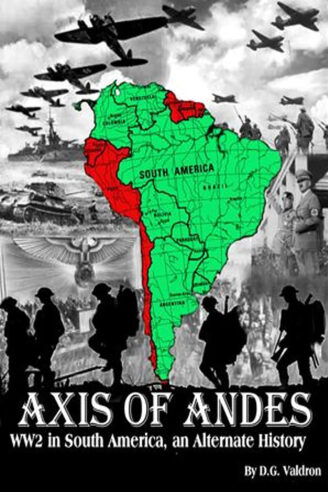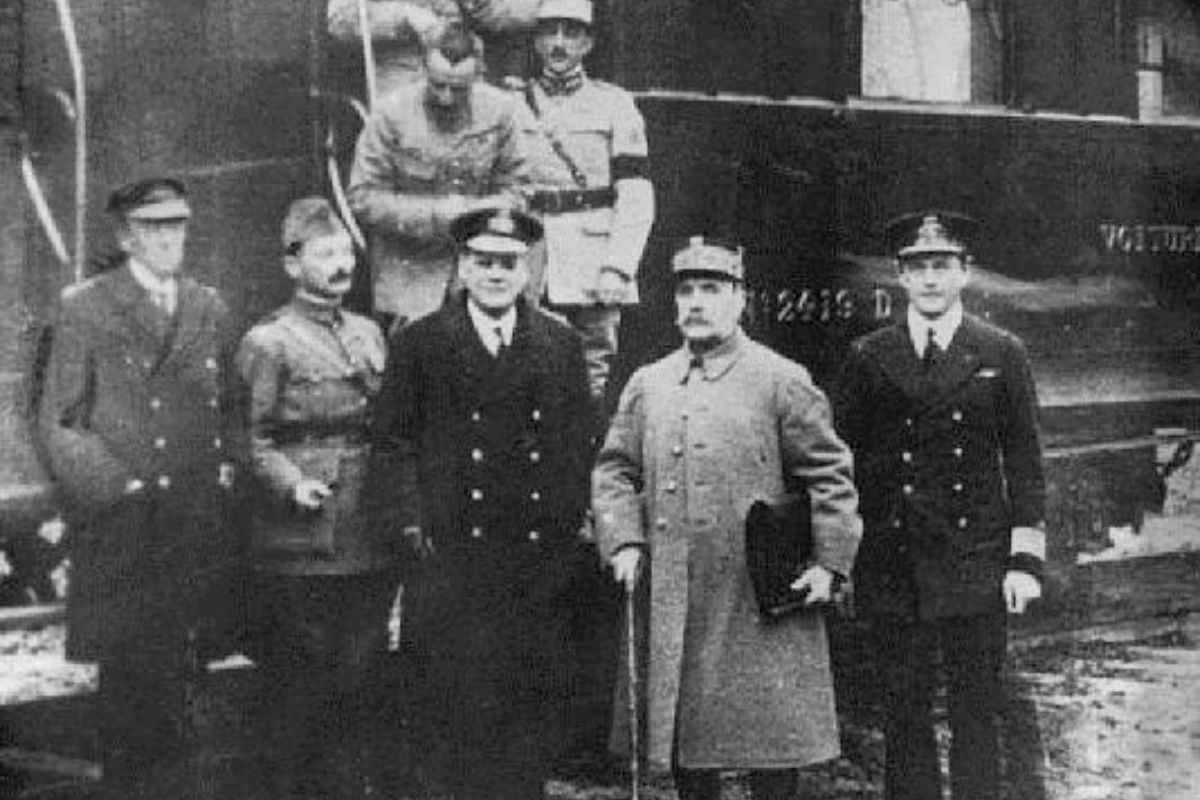We in the alternate-history community have a tendency to hyperfocus on the lands on the Atlantic area. The bulk of alternate history is devoted to Europe and North America from the eighteenth century onward, to the neglect of the imperial peripheries that make up the Global South.
It is with great satisfaction, then, that I bring your attention a duology by D.G. Valdron that concerns events in South America, perhaps our genre’s most neglected continent. Axis of Andes was originally a timeline on alternatehistory.com and now consists of two books: Axis of Andes: World War Two in South America and New World War: Part Two of Axis of Andes.
I wholeheartedly agree with my Sea Lion Press colleague Gary Oswald’s review of the duology: Axis of Andes demonstrates the great accomplishments of which the online alternate-history community is capable. (I’d argue that many Sea Lion Press works demonstrate that too.) It is an impressive work, epic in scope and extremely detailed in every section about a number of different countries.
As the name of the first book would suggest, Axis of Andes concerns a general war in South America roughly coterminous with the Second World War in Asia and Europe. The point of divergence is in the late nineteenth century, but the ramifications are not felt for some time. Of the nations of South America, Ecuador is the primary mover of this conflict, and it receives much discussion. Argentina, Bolivia, Brazil, Chile, Paraguay and Peru all get their due as well. Colombia and Venezuela show up only briefly.
The text is a bricolage of traditional fictional narrative, textbook-style discussions of events and the stranger sections taken directly from the discussion forum written in the present tense that sound like an author discussing his in-progress work with friends at a restaurant. These last are somewhat off-putting, as it is clear these parts weren’t originally written for a book.
The traditional narratives are the best. Some of these tales are strongly written with well-developed characters, which is all the more impressive given how so many of them appear only once or twice. There is a very real emotional core in many of these segments that can be legitimately moving or shocking, depending on Valdron’s intentions. My favorite of these was the death of a certain Bolivian character near the end of the second book.
Another strength of the duology is its emphasis, especially in the second book, on characters who aren’t typically the stars in alternate history. Valdron gives the indigenous peoples of South America their due. Several indigenous characters play an important role in the story after a certain point. In a genre so dominated by European (or white) empire, this is refreshing, and Valdron deserves praise for it.
There is one major flaw in the duology, and that is the editing. There are a great deal of typos and awkward sentences throughout both volumes. “Adolf” is consistently misspelled as “Adolph”, perhaps acceptable when describing a character in the Anglosphere but totally inappropriate when referring to the German dictator. “Colombia” too often appears as “Columbia”. Arequipa, a major city in Peru, is referred to as “Arequippa”. Valdron introduces a Brazilian character named “Pablo”, which is a Spanish name. A Brazilian would almost certainly have been called “Paulo”.
So Axis of Andes is a flawed triumph. As someone who has spent almost a decade in the online alternate-history community, I very much enjoy what Valdron has created. But it also relies heavily on conventions that are prevalent within that community, which may be alienating to readers who aren’t familiar with it. As such, it’s hard to recommend to outsiders. It’s a good duology, but one with a specific purpose and a specific audience, which both helps and hampers it.






2 Comments
Add YoursVery enlightened critique consistent with Alex Wallace’s literary work.
Thank you